Table of Contents
ToggleStrait of Malacca: The World's Busiest and Most Dangerous Waters
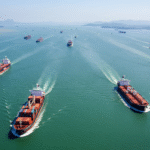

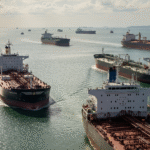
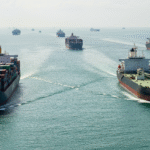
Hello and welcome back to the blog! We’re Yacht Delivery Solutions, and while our usual beat is the beautiful, albeit sometimes wild, waters of Australia and New Zealand, we’ve been getting more and more questions about deliveries in Southeast Asia. This region is a major hub for cruising yachts, and the Strait of Malacca is the super-highway connecting the Indian Ocean and the Pacific. It’s a passage that conjures up images of ancient spice routes and swashbuckling pirates. And while the swashbuckling part might be a bit of a romantic fiction these days, the piracy is, unfortunately, very real.
We’ve delivered boats to and from all sorts of challenging locations, from the rough waters off Tasmania on a Grand Banks 50 to a delivery of a Beneteau from Auckland to Fiji. These are big trips with their own unique set of problems, from rogue waves to dealing with the cyclone season. But sailing the Malacca Strait is a whole different ball game. It’s less about the forces of nature and more about the forces of human nature—and a whole lot of traffic.
“The Malacca Strait is extremely dangerous due to high maritime traffic, leading to risks of collision and grounding, as well as the persistent threat of piracy and armed robbery, including kidnapping for ransom and hijacking of oil tankers and yachts. Other dangers include navigational hazards from the strait’s geography, haze from regional fires reducing visibility, environmental pollution from accidents, and potential geopolitical instability and maritime terrorism.”
Threat on the Water
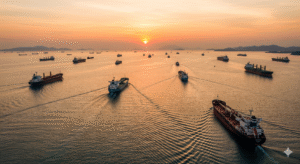
The targets are often large commercial vessels—tankers, bulk carriers, and container ships. The crime is often a smash-and-grab operation. Unarmed or lightly armed thieves in small, fast boats will come alongside a slow-moving vessel, climb aboard, and ransack the ship’s stores, engine room for spare parts (a significant and growing black market), or even the crew’s personal belongings. While most of these incidents are non-confrontational and the crew is not harmed, the risk of escalation is ever-present. A startled watchstander or a crew member who puts up a fight can quickly turn a petty theft into a violent encounter.
Piracy, Robbery, and Boardings
For a private yacht, this presents an even more significant danger. Unlike a large commercial vessel with a high freeboard and a crew of 20, a private yacht is a much more accessible and vulnerable target. The crew is smaller, the freeboard is lower, and a single yacht is much harder to defend. While these incidents have historically been less common for yachts, they are not unheard of. A yacht’s electronics, cash on board, and even the vessel itself are highly valuable targets for these criminal networks.
And then there’s the more frightening prospect of violent pirates boarding with weapons. While less common, these incidents do occur, and they are usually associated with more sophisticated criminal operations. We’ve seen reports of groups boarding with firearms, holding crews hostage, and forcing them to navigate to a remote location where the yacht can be stripped or the crew can be held for ransom. While these are not daily occurrences, the fact that they are a known risk means that any skipper entering the Malacca Strait must be hyper-aware of their surroundings and prepared for the worst.

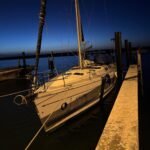
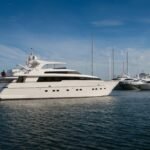

Beyond the human element, the sheer density of traffic is a challenge in itself. Imagine a six-lane highway at rush hour, but with no rules, no lane markers, and a mix of everything from a supertanker to a small kayak. That’s the Malacca Strait at night.
The primary shipping lanes, or Traffic Separation Schemes (TSS), are well-marked on charts, but it’s not as simple as staying out of the way. These lanes are not just for the “big boys.” You’ll have tugs with barges, fishing trawlers, and a huge number of local craft, many of which are not broadcasting on AIS (Automatic Identification System) and are often unlit. A typical night passage can feel like a video game, with red and green lights, blinking strobes, and other unknown lights appearing and disappearing in the darkness. We can’t stress this enough: a full, uninterrupted watch is required at all times. This is not the place for single-handing or a sleepy crew. A good radar with a MARPA (Mini Automatic Radar Plotting Aid) function is essential, as is a powerful spotlight to identify potential hazards.
The "Traffic Jam" That Never Ends
We’ve been on deliveries in the Tasman Sea where you don’t see another boat for three days. It’s a beautiful, lonely, but often exhausting experience. In the Malacca Strait, you can’t go five minutes without seeing a half-dozen boats on your radar. The added mental stress of constant vigilance for both traffic and potential security threats is a challenge that can wear down even the most seasoned crew.
For a delivery through the Malacca Strait, crew selection is paramount. We’re not just talking about sailing experience. We’re talking about a crew that is highly disciplined, alert, and can operate on a heightened level of awareness for days on end. This is not the time for lighthearted anecdotes about running out of coffee—this is a serious, tactical operation. The crew must be well-rested and follow a strict watch schedule, with an emphasis on keeping a proper lookout.
Crew and Preparation: A Non-Negotiable Imperative
Pre-departure checks and provisioning are also taken to a new level. We’re not just checking the engine oil and the rigging. We’re looking at security measures: locking all hatches, securing valuables, and having a clear plan for what to do in the event of an attempted boarding. Communication is vital. We rely heavily on satellite phones and Starlink for real-time weather updates and to stay in constant contact with our shore-based team. There’s a joke among sailors that you can get a better internet connection in the middle of the Pacific than in some marinas. In this case, that high-speed connection is a lifeline. It provides a constant stream of information on security threats and local warnings, which is more valuable than gold.
Our Expertise: From the Tasman to the Tropics
For years, Yacht Delivery Solutions has been the go-to company for yacht deliveries in Asia, Australia and New Zealand. We’ve navigated the tricky currents of the Torres Strait and the notoriously powerful gales of the Southern Ocean. We’ve delivered a diverse range of vessels, from a classic Riviera from Sydney to Perth to a modern Lagoon 52 from Fiji to New Zealand.
But our expertise extends beyond those familiar waters. We have an intimate understanding of the unique challenges presented by a route like the Strait of Malacca. We know that the preparation and execution of this delivery must be meticulous, with a zero-tolerance policy for complacency. The risks are different, and so our strategies must be different, too.
Ultimately, sailing the Malacca Strait can be an incredible adventure, a journey through a historically significant waterway filled with diverse cultures and stunning coastlines. But it is not a place for a casual cruise. It is a passage that demands a professional approach, a well-prepared crew, and an unwavering commitment to safety.
And that’s what we do best. At Yacht Delivery Solutions, we are experts in navigating these complex waters, ensuring your vessel—and your peace of mind—are in the safest hands possible, no matter how challenging the journey.

